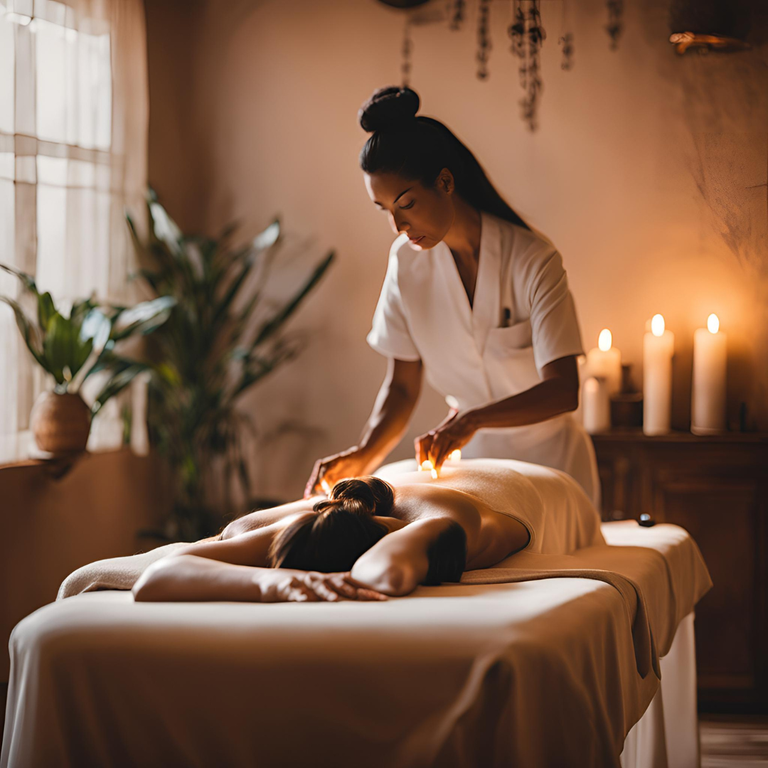
 [AI generated]
[AI generated]
Recently, I tried doing some crunches I hadn’t done in a long time, and the result was painful. I felt intense pain shoot through me like a bullet, and I screamed. It was a muscle spasm, also known as a cramp. Without thinking, I started massaging the muscle, and not long after, the pain began to ease.
This got me wondering, why are massages so effective? So, I did a little research. Come with me as we explore the art and science of massages.
Spas and Massages
Today, it seems like everywhere you go, there’s a place offering massages—whether it’s a shop, a room, or a house on a corner street or in a shopping center. People often go on “spa dates” or get massages to relax and de-stress. And it works, sometimes so well that they walk out feeling completely refreshed.
The word “spa” has roots in Latin and is linked to water and healing. It’s also connected to a town in Belgium called Spa, known for its hot springs believed to have healing properties. In ancient Rome, bathhouses were not just for bathing but were important places for social life and health. People got massages as part of their bathing routine to cleanse the body, improve circulation, and promote well-being.
Nowadays, the word “spa” is used to describe wellness centers that offer treatments like massage therapy, hydrotherapy, and other services meant to help people relax and restore their health.
Water therapy and massages are known to help with relaxation, improving blood flow, and reducing pain, so it’s no surprise they naturally go hand-in-hand. The benefits of soaking in hot mineral water, which we’ll talk about another time, are enhanced by massage therapy.
What’s So Special About Massages?
Now, let’s focus on massages and look into the fascinating world of massage therapy. Did you know that massages date back to ancient China around 2700 BCE? The "Yellow Emperor’s Classic of Internal Medicine" mentions massage as a treatment for various illnesses.
Over time, many cultures around the world started using massage for different reasons. In modern times, it became more formalized in the 19th century by a Swedish doctor named Per Henrik Ling, who developed the Swedish massage technique.
Since then, many other techniques have been perfected, including deep tissue massage, sports massage, and trigger point therapy. Today, massage is used not only for relaxation but also as a treatment for a wide range of muscle and joint problems.
More importantly, massages are now recognized for both physical and mental health benefits, often combined with other therapies.
How Does Massage Therapy Work?
Massage therapy is important for treating a variety of conditions, but how does it actually work? What makes it so effective?
In simple terms, massage works by affecting three major systems in your body: the muscles, nerves, and blood flow. Here are seven ways massages help heal the body:
Muscle Relaxation and Tension Relief: Massages loosen tight muscles and stretch muscle fibers, which helps reduce stiffness and improve flexibility. This is why they’re so effective on muscle cramps.
Improved Blood Circulation: When you get a massage, the pressure applied increases blood flow to the area. More blood means more oxygen and nutrients are delivered to the muscles, helping repair damaged tissue.
Lymphatic Drainage: The lymphatic system helps your body get rid of waste and toxins. Specialized lymphatic massages help make this process more efficient.
Pain Reduction: Have you heard of the "fight or flight" response? There’s an opposite reaction called "rest and digest," which massages trigger. This helps slow down your heart rate and releases natural painkillers called endorphins.
Myofascial Release: Muscles are wrapped in a special tissue called fascia. Sometimes this tissue gets tight, restricting movement and causing pain. Specialized massage techniques help stretch and soften fascia, improving flexibility and reducing discomfort.
Stress Relief: Massages activate your body's "rest and digest" system, which reduces stress hormones. This leaves you feeling more relaxed and less stressed.
Mental Benefits: Massages can help reduce anxiety, depression, and stress by releasing feel-good chemicals like endorphins and serotonin, which are linked to happiness and well-being.
Conclusion
Massage therapy is an ancient practice that has evolved into a powerful tool for healing. It not only works on your physical body but also has positive effects on your mind, helping you feel better overall, manage pain, and relax. Plus, it has little to no side effects. Why not treat yourself to a massage today?
I am Covenant, a Medical Doctor with a passion for holistic medicine-( fancy word for treating a patient as an individual and not just addressing their symptoms). My focus lies in the deep connection between mental health and overall wellbeing, and I create content across various medical topics with an emphasis on mental health. Follow me for insights into holistic medicine and approaches to health and wellness.